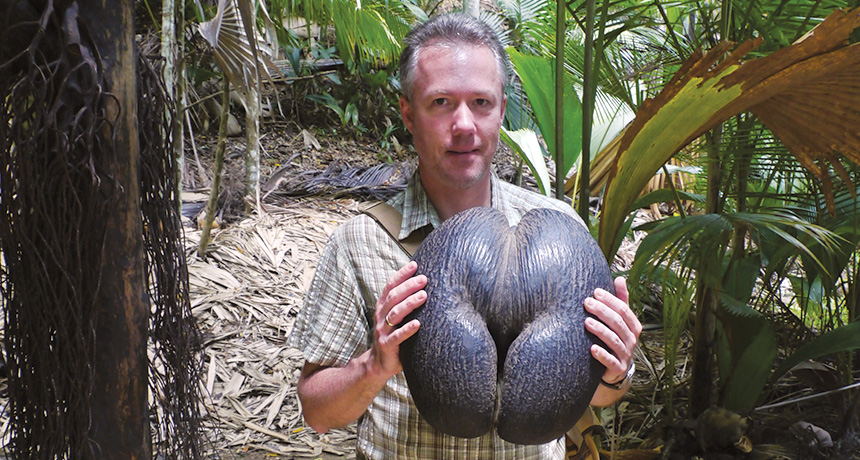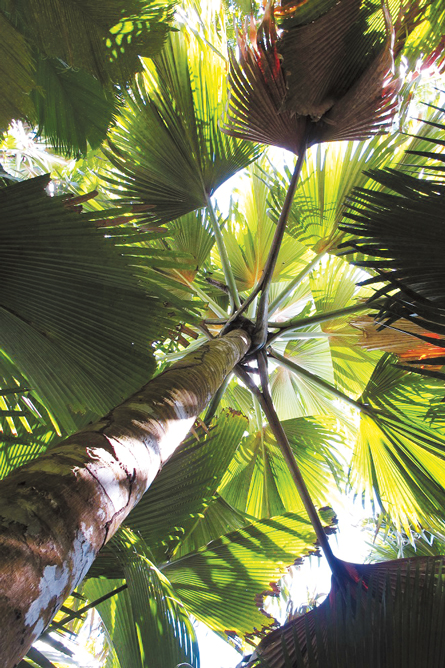How slow plants make ridiculous seeds
Coco de mer palms go extravagant on a tight budget

HUGE SEEDS The iconic shape of a coco-de-mer nut that intrigues a traveler (shown) won’t show up on a tree. It’s evident only once the outer green husk is stripped off.








